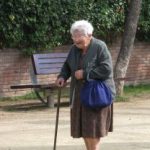Welcome to this months makeabigdifference newsletter, your one-stop-shop for all the latest charity and fundraising news and up to date cancer news and trials.
In this edition we take another look at ‘The Big C’ where we ask why do some people get cancer and others don’t. Is it really just down to the cards we all dealt? Or is it something we can control by diet and exercise?
Manuka honey is something I personally have used for several months and I can’t promote it enough for the use of natural healing and wellbeing. When researching Manuka’s powers I came across several articles stating the benefits for cancer sufferers. I was also astounded to read that a very famous cancer hospital in the UK is trialing the super honey for healing wounds of throat cancer patients. You can read more about Manuka in the month’s newsletter.
We also have an Easter themed Katie’s Corner, Fundraising idea of the month and lots of cracking Easter offers with easyfundraising.com.
I would like to take this opportunity to wish you all a very happy Easter and hope you all have a wonderful bank holiday (let’s hope the weather stays nice!)
Until next month
Kim Doran
Editor
Katie’s Corner
It’s not Easter without something sweet to eat, so go traditional and try making this delicious Easter simnel cake, enjoy with a nice cup of tea!
Ingredients
* 225g sultanas
* 100g currants
* 50g mixed peel
* juice of 1 lemon (optional
* 50 ml brandy (optional)
* 50 ml orange juice (optional)
* 225g soft butter
* 225g light muscovado sugar
* 4 eggs
* 225g self-raising flour
* 100g glace cherries, rinsed in hot water, dried and quartered
* grated rind of 2 lemons
* 2 tsp mixed spice
For the topping:
* 450g best quality marzipan
* 2tbsp apricot jam
* 1 egg beaten, to glaze
1) Two days before you intend to make the cake place the sultanas, currants and mixed peel in a bowl with the lemon juice, brandy and orange juice, mixing it well and leaving to one side for the fruit to soak up the liquid. This will produce a much moister cake when baked, but can be omitted.
2) Pre-heat the oven to 150C/Gas 2. Line the base and sides of a 20cm deep round tin with silicone paper.
3) Measure the rest of the cake ingredients in with the fruit and beat well until thoroughly mixed. Put half of this mixture in the bottom of the cake tin and level it off so that it is as flat as possible. Divide the marzipan into three equal parts and roll out one piece into a circle 20cm diameter, and put it on the top of the cake mixture. Gently spoon on the rest of the mixture, levelling the surface again.
4) Bake for approximately 2½ hours until brown, well risen and firm to touch. Allow to cool for 15 mins and then turn out to cool on a wire rack.
5) When the cake is cool, warm up the apricot jam in a small saucepan and brush the top of the cake with it. Roll out half of the remaining marzipan to the size of the top of the cake. Press it down firmly and push the edges down with your thumb to crimp it round the sides. Roll the rest of the marzipan into eleven balls to represent the Apostles, without Judas. Brush the top of the marzipan with the beaten egg and place the balls evenly around the outside, brushing the tops of the balls as well. Place the whole cake under a hot grill until the marzipan turns a light golden colour.
Fundraising idea of the month
The Easter Bunny
A central character for many Easter celebrations. Someone dressed up in a Bunny Suit makes a perfect host for your Easter Fundraisers, particularly if you are working on fundraising ideas for kids. Don’t forget to invite your guests to have their picture taken with The Easter Bunny before they go home.
- Breakfast, lunch or tea with the Easter Bunny – Invite children to a special Easter Bunny party.
- Easter Bunny Hop – A fun bunny dance party where everyone has a pair of rabbits ears.
At both having some real live pet bunnies for the children to hold (under supervision) adds another dimension. A few hoppity party games such as musical bumps would also always be popular. You could also combine these with any of the Easter Egg ideas below.
Easter Egg Fundraisers
Traditionally Easter eggs are part of the Easter celebrations. But there are many ways they can be incorporated into your Easter Fundraisers.
- Easter Egg Hunt – This is a well known part of many people’s Easter. Small wrapped chocolate / candy eggs are hidden around a certain area such as a garden, playground, sports field. Children then hunt for the eggs. There are lots of variations fundraisers can do around this. Charge a fee to take part or use the Easter Egg Hunt as a free event around which you can work some other fundraising ideas such as raffles, fete activities and refreshments.
- Golden Egg – There are lots of variations you can do with this fete favourite and it is particularly appropriate at Easter. A tray of painted egg shells part buried in sand with one hiding a prize is the idea at its simplest but there are lots of other ways you could work this idea.
- How Many Easter Eggs In The Jar? – Fill a jar with small candy eggs. Charge people to guess how many. Closest guess wins.
- Raffle a Big Easter Egg – A really big Easter Egg in a basket makes a great focal point for an Easter raffle.
- Easter Egg Toss – This is a great idea for sports fundraisers or older school groups. An egg is thrown between 2 people, the distance between them increasing each time a successful catch is made. The winner is the longest completed throw without the egg being broken or dropped. This could be a great focal point for a special Easter event (fancy dress would add to the fun!) or just as a simple fundraiser alongside something else.
- Decorated Easter Egg Competition – Get people to decorate an egg. This might be the most detailed and beautiful ornamentation or the funniest face and accessories (wooly wigs, felt hats etc).
If real eggs are too small to show the true artistic talent cover balloons with papier mache and have some bigger efforts.
A decorated egg competition makes a good focal point around which you can work some other fundraisers. If your eggs were impressive however you might like to display them, for instance at an Easter Fete, a town centre during Easter or outside your church after the Easter service with a collecting jar, plate or bucket in front of them. People could then vote for their favourites with their spare change; the egg that collects the most cash being the winner.
Easter Bonnet Parade
This is a very old Easter tradition but can make a great Easter fundraising idea too. It works very well as a cute fundraising idea for kids as they all get dressed up in hats too big for them and a few of Mum’s accessories.
Alternatively encourage children to make their own Easter Bonnet. These can be traditional or a modern take on the idea. All entrants then parade at your fundraising event before a winner is chosen.
Tip – The local press love this sort of thing at Easter make sure you let them know.
LATEST CANCER NEWS
‘Two young adults diagnosed with skin cancer every day’
Each day more than two people under 35 in Britain are diagnosed with malignant melanoma – the deadliest form of skin cancer – according to new figures from Cancer Research UK.
The charity’s 2011 SunSmart campaign, reveals an alarming tripling in melanoma rates among British 15-34 year olds since the late seventies.
In the late seventies, there were around 290 cases of melanoma among 15-34 year-olds. Now more than 900 young Britons are being diagnosed with the disease each year – more than two a day.*
Thirty years ago, there were 1.8 cases of melanoma per 100,000 people in this age group. Now there are 5.9 cases per 100,000 and the numbers continue to increase. Latest available figures show that the total number of cases of malignant melanoma for all ages increased from 10,800 in 2007 to 11,700 in 2008 – a rise of 8.5 per cent.
‘New law protects under-18s from sunbed dangers’
New laws have come into force this month (April 8th) which will prevent under-18s in England and Wales from using sunbeds, and punish businesses that fail to comply with the regulations.
The Sunbeds (Regulation) Act 2010 is designed to protect under-18s from overexposure to ultraviolet (UV) radiation, which is the main cause of skin cancer.
A study by Cancer Research UK shows that six per cent of 11 to 17-year-olds in England – including half of all 15 to 17-year-olds in Liverpool and Sunderland – use sunbeds to achieve a year-round tan.
According to the charity’s SunSmart campaign, two people under the age of 35 are diagnosed with melanoma skin cancer each day – and a proportion of these cases are thought to be linked to sunbed use.
Under the new regulations, under-18s are now banned from using tanning salons and sunbeds at beauty salons, leisure centres, gyms, hotels and other premises.
It is now illegal to offer an under-18 the use of a sunbed, and young people are no longer allowed in areas that are reserved for sunbed users.
Businesses that fail to comply with the regulations and allow under-18s to use sunbeds will face fines of up to £20,000, and local authorities will be responsible for inspecting businesses and enforcing the Act.
Sourced from www.cancerresearchuk.org/news‘The Big C’
Welcome to the second installment of ‘The Big C’; a three part special taking a closer look at cancer and what it actually is.
Every year, millions of people are diagnosed with cancer – a remarkably high number. But what about the flipside of those statistics?
That is, two out of three people never get cancer, and more than half of heavy smokers don’t get cancer either.
Below are some possible theories and explanations as to why many people are resistant to this often deadly disease.
‘Risky’ behaviour
This just means indulging in something that increases your risk. It may be smoking, or drinking too much, or eating a very unhealthy diet.
Some of us look after ourselves better than others. And this can have a real effect on our health. But some people look after themselves really well and still get cancer. While others don’t seem to look after themselves at all and never do.
Genetic predisposition
You may hear doctors or scientists talk about genetic predisposition to cancer. This means that your genetic make up makes it more likely that you will develop cancer.
It is not common, but there are such things as cancer families. These families have a much higher incidence of cancer than other families in the population. This may be particular types of cancer. But some families have all sorts of different cancers turning up in their family tree. They probably have a change (mutation) in a gene that is crucial in the development of many different cancers. Researchers often ask such families to help them in their research. Their genetic make up provides clues that help to show which genes are the most important in causing cancer.
For most people who may have a general susceptibility to getting cancer, it is not very obvious. Many of us probably have particular genes that are not very important in cancer development, but may increase our risk a little. For example, the cells of the lining of the lungs may be more likely to be damaged by cigarette smoke for person ‘A’ compared to person ‘B’. It is more likely that person ‘A’ will develop a cancer than person ‘B’ who does not have that affected gene, even if they both smoke.
Cancer specialists believe that the younger someone is when they develop an ‘adult’ cancer, the more likely it is that there are genetic factors at work
Chance
Many changes in genes are accidental. Cells divide and each time they do, they have to copy their genetic code completely. Sometimes mistakes happen. Many of these accidents would be fatal and make the daughter cells die. Sometimes the damage is repaired. Some changes wouldn’t make very much difference to how the cell works. But they may take that cell one step further along the road to becoming cancerous.
Very many people with cancer, and their families, find this aspect of their cancer very difficult to come to terms with. It can sometimes make cancer easier to deal with if you understand why you have it.
The immune system
People who have problems with their immune systems are more likely to get some types of cancer. This group includes people who
- have had organ transplants and take drugs to suppress their immune systems to stop organ rejection
- have HIV or AIDS, are born with rare medical syndromes which affect their immunity.
The types of cancers that affect these groups of people fall into two, overlapping groups
- Cancers that are caused by viruses, such as cervical cancer and other cancers of the genital or anal area, some lymphomas, liver cancer and stomach cancer.
- Lymphomas
Chronic infections or transplanted organs can continually stimulate cells to divide. This continual cell division means that immune cells are more likely to develop genetic faults and develop into lymphomas.
Genetic make up
There need to be a number of genetic mutations within a cell before it becomes cancerous. Sometimes a person is born with one of these mutations already. This doesn’t mean they will definitely get cancer. But with one mutation from the start, it makes it more likely statistically that they will develop cancer during their lifetime. Doctors call this ‘genetic predisposition’.
The BRCA1 and BRCA2 breast cancer genes are examples of genetic predisposition. Women who carry one of these faulty genes have a higher chance of developing breast cancer than women who do not.
The BRCA genes are good examples for another reason. Most women with breast cancer do not have a mutated BRCA1 or BRCA 2 gene. Less than 5% of all breast cancer is due to these genes. So although women with one of these genes are individually more likely to get breast cancer, most breast cancer is not caused by a high risk inherited gene fault.
This is true of other common cancers where some people have a genetic predisposition – for example, colon (large bowel) cancer.
Researchers are looking at the genes of people with cancer in a study called SEARCH. They also hope to find out more about how other factors might interact with genes to increase the risk of cancer.
Bacterial infection
Bacterial infections have not been thought of as cancer causing agents in the past. But studies have shown that people who have helicobacter pylori infection of their stomach develop inflammation of the stomach lining, which increases the risk of stomach cancer. Helicobacter pylori infection can be treated with a combination of antibiotics.
Research is also looking at whether substances produced by particular types of bacteria in the digestive system can increase the risk of bowel cancer or stomach lymphomas. Some researchers think that particular bacteria may produce cancer causing substances in some people. But research into this issue is at an early stage.
If bacteria do play a part in causing cancer this could be important in cancer prevention. Bacterial infections can often be cured with antibiotics, so getting rid of the infection could be a way to reduce the risk of these types of cancer.
Bodyweight, diet and physical activity
Cancer experts estimate that maintaining a healthy bodyweight, making changes to our diet and taking regular physical activity could prevent about one in three deaths from cancer in the UK. In the western world, many of us eat too much red and processed meat and not enough fresh fruit and vegetables. This type of diet is known to increase the risk of cancer. Drinking alcohol can also increase the risk of developing some types of cancer. There is more information about this in the page on diet causing cancer.
Sometimes foods or food additives are blamed for directly causing cancer and described as ‘carcinogenic’. This is often not really true. Sometimes a food is found to contain a substance that can cause cancer but in such small amounts that we could never eat enough of it to do any harm. And some additives may actually protect us. There is more about food additives in the page on diet causing cancer.
Age
Most types of cancer become more common as we get older. This is because the changes that make a cell become cancerous in the first place take a long time to develop. There have to be a number of changes to the genes within a cell before it turns into a cancer cell.
These changes can happen by accident when the cell is dividing. Or they can happen because the cell has been damaged by carcinogens and the damage is then passed on to future ‘daughter’ cells when that cell divides. The longer we live, the more time there is for genetic mistakes to happen in our cells.
Day to day environment
By environmental causes we mean what is around you each day that may help to cause cancer. This could include
- Tobacco smoke
- The sun
- Natural and man made radiation
- Work place hazards
- Asbestos
Some of these are avoidable and some aren’t. Most are only contributing factors to causing cancers – part of the jigsaw puzzle that scientists are still trying to put together.
Information and facts sourced from
http://www.cancerhelp.org.uk
Cracking Easter offers with
Easyfundraising
?It is simple to register and choose Impact Young Heroes as your charity to support; and you can get some really great bargains.
Thorntons Direct
Spend £20 or more and get a FREE box of chocolates (product code 6554) when you add them to your basket and use eVoucher code ‘EA44′ at checkout.
* Offer is applicable to one order only.
OFFER EXPIRES: 22-April-2011
2.5% donation to young heroes
Hotel Chocolat
Use eVoucher code ‘EFEGG11′ at checkout to receive 10% OFF at Hotel Chocolate when you spend £25 or more.
*Offer excludes delivery.
OFFER EXPIRES: 24-April-2011
Up to 4% donation *
Moko Chocolates
10% OFF all orders when you use eVoucher code ‘AP10‘ at checkout.
OFFER EXPIRES: Midnight 3-May-2011
4% donation
Interflora
Use eVoucher code ‘EFR8EASTER‘ at checkout to get 8% OFF when you spend £25 or more at Interflora.
*Offer excludes overseas orders.
OFFER EXPIRES: 26-April-2011
Up to 3% donation *
Amazon
Easter gifts at Amazon. From things to do to tasty treats.
*Subject to availability.
Up to 2.5% donation
John Lewis
Everything you need to make this Easter special, from crafts to baking. Not to mention a delicious range of Easter Eggs. Plus, FREE standard delivery with all orders over £30.
Up to 2.5% donation
Bunches
Use eVoucher code ‘AWM10‘ to get 10% OFF at Bunches.
OFFER EXPIRES: Midnight 3-May-2011
5% donation
Red Letter Days
10% OFF short breaks at Red Letter Days.
OFFER EXPIRES: 24-April-2011
6.5% donation
Manuka Honey –
Natural healing at its best
Medicine may be increasingly high-tech, but the latest wonder treatment which is being offered to patients is honey.
Recently, it was announced that bandages soaked in Manuka Honey are to be given to mouth cancer patients at the Christie Hospital in Manchester to reduce their chances of contracting the MRSA superbug and to lessen wound inflammation following surgery. This is just the latest study investigating this particular type of honey’s healing powers.
Manuka Honey is used routinely at the Manchester Royal Infirmary for dressing wounds, and other research has found it can fight gum disease, ease digestive problems and soothe sore throats. In addition to its internal uses, Manuka Honey can also be used externally on the skin to treat conditions such as infected wounds, eczema, ringworm, acne, etc.
All honey contains hydrogen peroxide, a substance once used as a wound disinfectant in hospitals. It comes from an enzyme that bees add to nectar. It also contains the enzyme glucose oxidase, which boosts its antibacterial properties. This was recognized by the ancient Egyptians and Greeks, who used honey to help heal burns and sores. However, it has been recognized that Manuka Honey from New Zealand contains higher levels of these healing properties, more so than any other type of honey.
It is important to stress however that Manuka Honey will not help fight cancer and there is currently no supporting evidence that it does.
Keep Voting for our little Deacon
Don’t forget there’s still time to vote for Deacon Doran in Venture Photography’s ‘Little Face of Venture’ competition.
http://www.venturephotography.com/uk/little-face-of-venture/
Please get your votes in by no later than Midnight 30 June. We look forward to keeping you up to date and keep your fingers crossed for our little cutie!






















